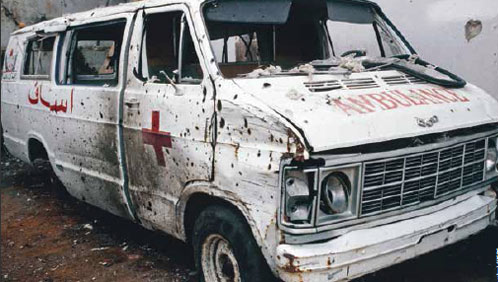By Becci Fobbe
It all started in 1859 when a Swiss businessman decided to travel to Solferino, Italy to present a concept to Napoleon III who was fighting a battle in Northern Italy at that very moment. What he experienced on his way was more important to him and to the rest of the world: the lack of human dignity that he saw during the battle of Solferino.
Hundreds of thousands of corpses and bodies were unattended to – lying around on the battlefield, dying without a last prayer or medical help. In order to process his disturbing experiences he wrote a book and initiated the establishment of the Red Cross, which developed into the international organization that we have all heard of today.
It is the largest humanitarian network in the world, present in every country on the globe. Millions of volunteers help every day to alleviate human suffering, protect life and health and uphold human dignity especially during armed conflicts and emergency. While here in the Netherlands you will might the Red Cross as providing First Aid courses and help during floods, most Red Cross workers are actually employed in areas of wars or natural catastrophes; such as Iraq, Nigeria, South Sudan and Ukraine, among many others.
Under the Geneva Conventions that were first established in 1949, and international humanitarian law, Red Cross workers are meant to be natural and unharmed during their missions in conflict areas. They act as an impartial third party and aim to help and protect every involved individual be they civilian, rebel or soldier. However, the altruistic and diligent volunteers work under harsh and life-threatening conditions sometimes; conditions that recently caught the eye of the public again.
Earlier this year on the 18th of February, two volunteers of the Myanmar Red Cross Society were wounded when the eight-vehicle-long-convoy, bearing a Red Cross flag as attacked while evacuating displaced families who came under fire attacks in the Kokang region. And sadly this is not the only case. In the short timespan of 2015 alone, multiple atrocious and shocking incidents occurred. Such as the three unrelated attacks happened. The first on 30th of March of this year when a volunteer was shot and killed in Yarmouk camp (near Damaskus in Syria). Then again, in Yemen, a Red Crescent worker was killed while helping people who had been wounded during ongoing fights in the southern district of Al-Dhale’.And again, in Mali Mali, an aid truck of the ICRC was attacked which killed one member and injured multiple others.
In 2014, a total of 14 volunteers of the ICRC and 206 volunteers of National Red Cross Societies were attacked, kidnapped or killed. This number might be insignificantly small compared with the number of victims of wars, suppression or natural catastrophes, but it also holds a different value. Most of these volunteer workers sign up because they truly believe in the power the ICRC can have – it operates as a ‘first provider’ of necessities in areas where even local governments shy away from and are therefore sometimes the only help and reliable source for people at subsistence level.
The volunteers who are killed are usually from safe homes, and through helping others flee from their homes in conflict areas they put their life in danger to save another life. Yves Daccord, the Director-General of the ICRC heavily critics the attacks on these volunteers, saying: “Attacks on humanitarian workers are completely unacceptable and we condemn them in the strongest possible terms. These were people dedicated to helping others under the most difficult and dangerous conditions. All parties to conflict must abide by their obligations under international humanitarian law and may not attack humanitarian personnel, hospitals or ambulances.”
Why are these workers attacked then? Mostly, because certain parties involved in the conflict do not want them to help. They do not feel like a situation would improve. They might feel threatened by an organization that gets most of its funding, volunteers and equipment from the Western North. They feel left out in decision-makings or simply do not want to accept foreign help. Sometimes, parties are imperceptive of what the protecting white flag with a red cross or red crescent stands for.
Even though the background of most of these attacks, which are often also completely unrelated, is mostly unknown and can only be speculated about, one fact remains visible. The number of attacks on humanitarian workers clearly increased in the past years. In 2003, a total number of 63 people were attacked, last year it was a total of 264. We are only left to wonder how the situation for these humanitarian workers can be improved in the next years without jeopardizing important aid missions and how the general perception of the ICRC volunteers can be changed in the aid-receiving countries.
Becci Fobbe, Büdingen Germany, Major in Politics and Law, Class of 2016

